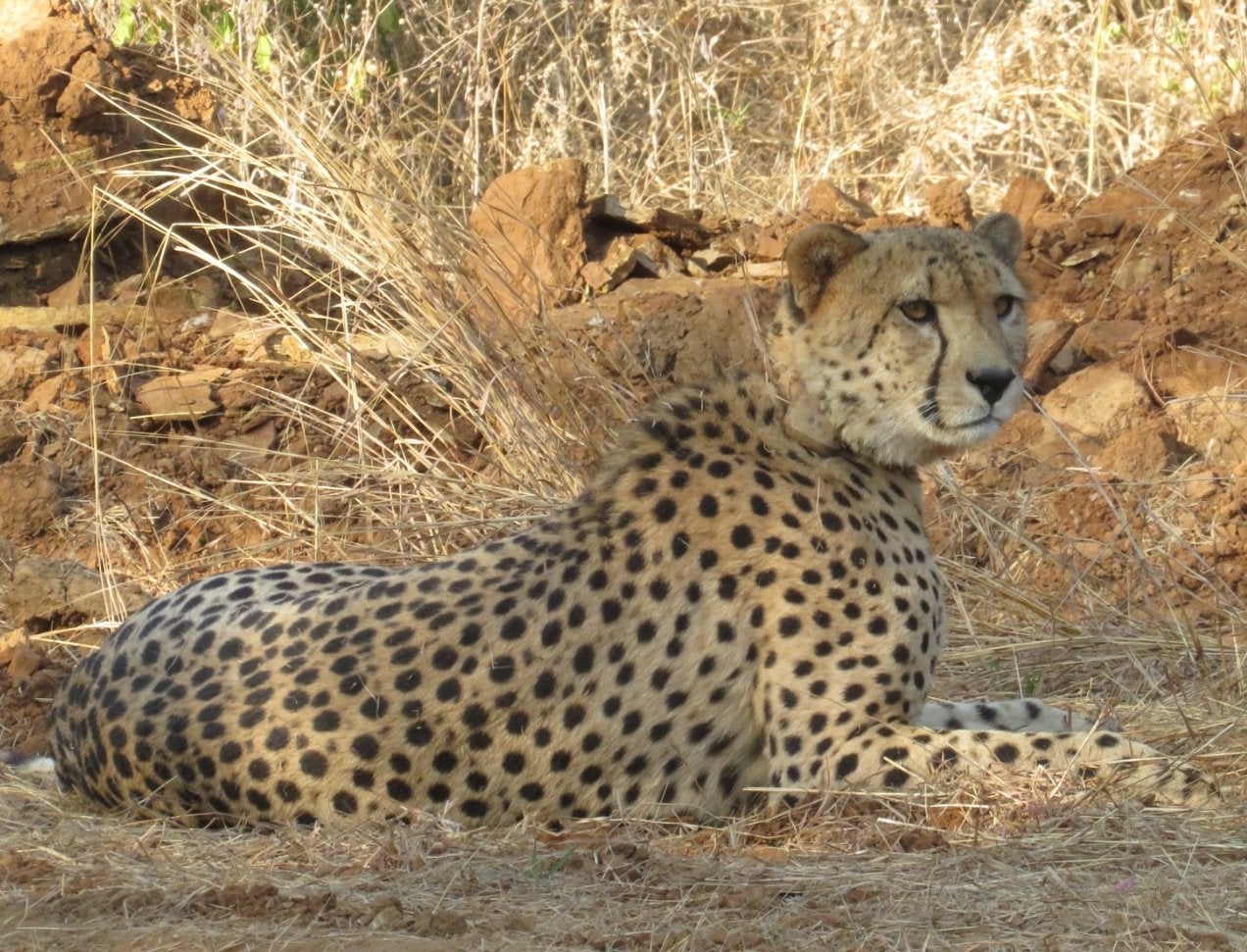Indian officials on ‘hide and seek’ mission for missing cheetah feared dead
Wildlife officials deploy drones and dozens of personnel to find cheetah Nirva after she evades darting attempt

Your support helps us to tell the story
From reproductive rights to climate change to Big Tech, The Independent is on the ground when the story is developing. Whether it's investigating the financials of Elon Musk's pro-Trump PAC or producing our latest documentary, 'The A Word', which shines a light on the American women fighting for reproductive rights, we know how important it is to parse out the facts from the messaging.
At such a critical moment in US history, we need reporters on the ground. Your donation allows us to keep sending journalists to speak to both sides of the story.
The Independent is trusted by Americans across the entire political spectrum. And unlike many other quality news outlets, we choose not to lock Americans out of our reporting and analysis with paywalls. We believe quality journalism should be available to everyone, paid for by those who can afford it.
Your support makes all the difference.A cheetah has managed to give India’s wildlife officials the slip for more than a week, amid fears she could be the latest wildcat to die over the series of major setbacks plaguing an ambitious translocation project.
The news of cheetah Nirva’s disappearance for 10 days now has just added to the woes of Indian wildlife officials trying to curb the increasing number of deaths of the wildcats that have been brought to India from Africa to revive their population in the continent more than 70 years after extinction.
There have been six deaths of cheetahs translocated from Africa, in addition to the deaths of three cubs that were born to the wildcats in India, in the last four months.
Eight cheetahs were initially translocated from Namibia to Kuno National Park, where the project is taking place since September last year, while another 12 were borrowed from South Africa this February.
And now, officials at Kuno are on the hunt for the South African cheetah amid fears that she has low chances of survival.
The officials had “a very brief glimpse” of Nirva on 29 July after a tough search operation for her and another cheetah that was earlier found dead due to myiasis, or maggot infection, last week, park officials told The Independent on Tuesday.
“Our staff had a direct sighting of Nirva on 29 July but it was a very brief glimpse that we managed. We are continuing our search for her every day, and the hunt is based on our records of her previous movements and visuals,” chief wildlife warden Aseem Shrivastava told The Independent on Tuesday.
The cheetah successfully managed to dodge a darting attempt.
The official, who recently took charge of the Kuno National Park, however, said the hunt has been rigorous and continuing as they want to bring her back into an enclosure made for the cheetahs for her well being.
“We have her pug marks on record and several movements reported by our staff,” Mr Shrivastava said, adding that local staff is using indirect evidence, last recorded locations on her satellite collar and physical sightings to assess where Nirva could likely be.
Officials were previously unable to pin Nirva down in the last two months as well due to her malfunctioning collar. They have deployed drones, taken help from locals and villagers in and around the area and dozens of officials to find her.
Locals, however, suspect Nirva’s survival chances are bleak and have said officials should disclose if the cheetah is alive and safe.
Wildlife activist Ajay Dubey said there is a huge question mark on Nirva’s condition.
“The missing cheetah Nirva, who happens to be wearing a radio collar, is not expected to be alive,” Mr Dubey told The Independent.
“This is not the first time something like this will happen under the watch of the Chief Conservator of Forests (CCF) Uttam Sharma,” he said, referring to a senior state-level forest official.
A similar case of a tiger wearing a satellite collar was also reported missing for a month but only its skinned body was found after a month, the activist said.
The CCF declined to comment on the matter and said any details about Nirva will only be revealed in an official note to the media.
A total of 13 cheetahs are now kept in enclosures to restrict their wildlife activities, as the park administration looks to avoid further deaths amid extreme monsoon conditions in central India.
The African cheetahs – that grow thick fur due to the anticipation of winter conditions – have faced excessively wet conditions in India.
Those who died had contracted septicemia on their wet necks. To prevent this, Indian officials have brought over the 13 remaining cheetahs from the free-ranging wild to enclosures for monitoring.
The lone surviving cub, born in March this year, is also being bred in captivity after being deserted by its first-time mother, officials had told The Independent.
Conservationists have emphasised on the project’s critical need to succeed as they look to repopulate cheetahs outside of Africa, slowly into Asia and then to the Middle East.
Of the 12 borrowed from South Africa, India lost four cats within six months to bacterial infection, maggots and cardio-pulomonary failure.
While some deaths were anticipated among the founder population of cheetahs, and that the project would be termed a success if half the population survives, the string of deaths since March have given rise to many questions.
Some of the founders of the project have termed the latest deaths an “expensive learning” and “avoidable” for India.





Join our commenting forum
Join thought-provoking conversations, follow other Independent readers and see their replies
Comments